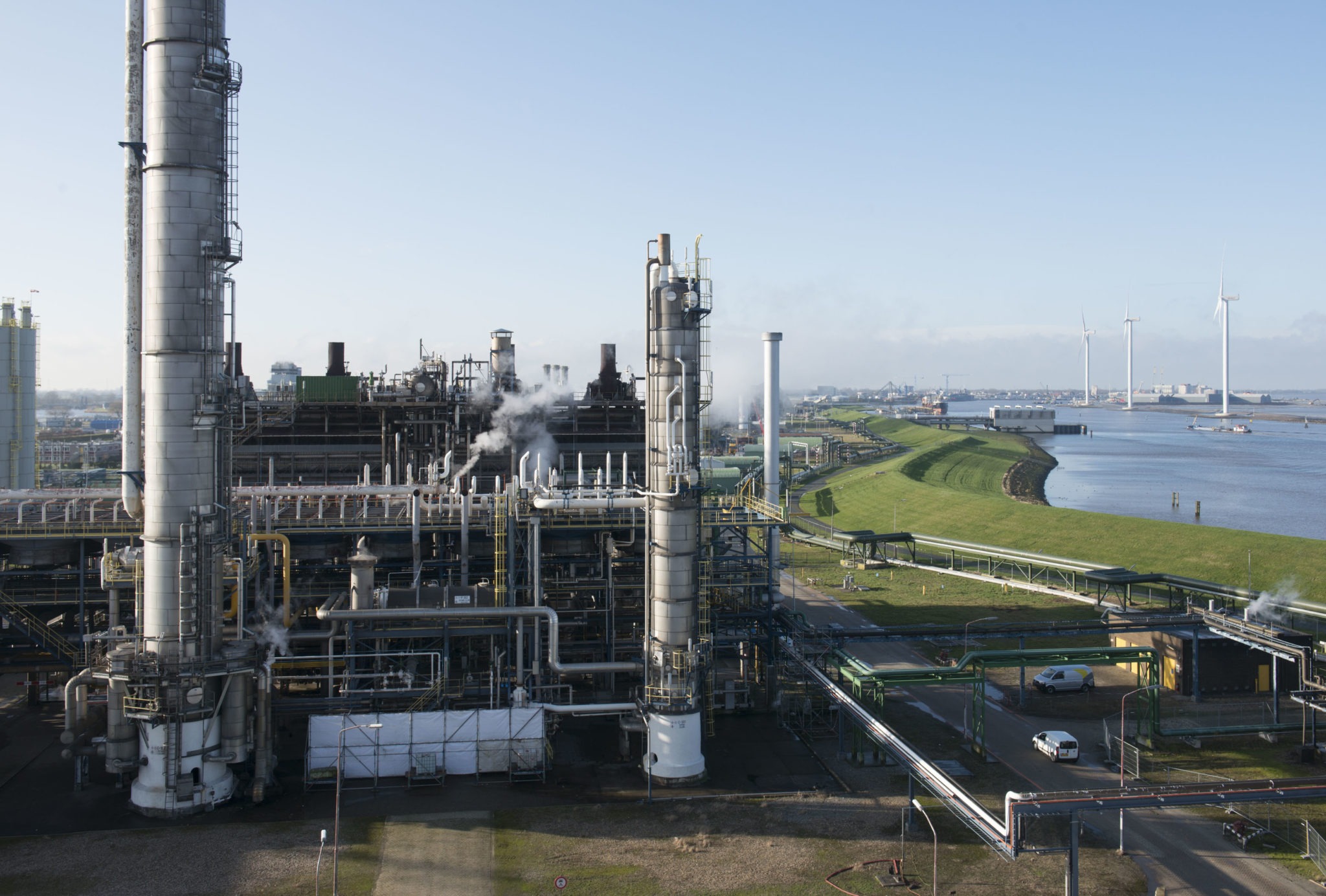Want to know more about this article?
Green hydrogen for renewable methanol
The energy company GasUnie New Energy and Nouryon specialty chemicals consider building a 20 megawatt plant in Delfzijl to produce hydrogen. This will then be used by BioMCN to produce renewable methanol. The plans are part of a much larger package to stimulate the hydrogen industry in the Northern Netherlands.
The hydrogen will be produced by Nouryon through electrolysis of water, using green electricity. ‘We have ample experience with hydrogen’, explains Harry Jasken, spokesperson for Nouryon. The hydrogen is generated as a by-product of chlorine production. ‘We use most of it in our own powerplant, but we also have some pipeline customers here at the Chemical Park Delfzijl.’
The energy transition has stimulated interest in using hydrogen – produced with green electricity, e.g. from off shore wind parks – as an alternative to fossil fuels and fossil based raw materials. Nouryon is taking part in this development: ‘In February last year, a hydrogen filling station for a few buses was officially opened in Delfzijl. This was a pilot for buses currently operating in the region.’
Moving from small scale mobility applications , via energy towards hydrogen as a chemical building block, the new plant could become part of this development. However, the final decision on building the plant will not be taken until the end of this year. Jasken: ‘We are currently studying the plan, to see if it is economically and technically feasible.’ The plant could produce some 3,000 tons of hydrogen (30 million cubic meters) per year.

BioMCN
If the plan goes ahead, the main customer for this hydrogen will be BioMCN, also located in Delfzijl. BioMCN, one of Europe’s largest methanol producers, is the first company in the world to produce and sell industrial quantities of high quality bio-methanol. They will combine the hydrogen with carbon dioxide produced as a by-product in biogas plants to green methanol.
BioMCN is always looking for new types of renewable feedstock and we believe that green hydrogen can play a significant role in decarbonizing chemistry, says Julius van Dongen of BioMCN: ‘However, it is clear that the production of green hydrogen should be scaled up in the near future, since with the volume of green hydrogen from this project, a total of 1.5 percent of current feedstock and fuel gas can be replaced.’
Investment Agenda Hydrogen
Plans to do just that are included in the regional ‘Investment Agenda Hydrogen’ (Investeringsagenda waterstof Noord-Nederland). In this document, stakeholders present how green hydrogen production can be increased over the coming decade. The plan describes the ambition of the region to become a major player in the production of green hydrogen, and in its use for energy transport and storage, public transport and as feedstock for the chemical industry.
‘This collaboration is an important first step’, says Van Dongen. He expects that the capacity for green hydrogen production will increase significantly in the near future. Jasken shares this vision: ‘Our current activities in green hydrogen, which are part of our core business, are just a start.’
More about | Methanol
Methanol is a clear liquid chemical that is water soluble and readily biodegradable. It is conventionally used as a chemical building block for a range of products, including bio-MTBE, bio-DME, bio-hydrogen and synthetic biofuels. It is also used for a variety of non-fuel applications including plastics and paints.
In addition to its use as a chemical building block, methanol is increasingly used in several clean energy applications, both as a direct fuel alternative, and as feedstock for other environmentally friendly fuels.
Bio-methanol
Bio-methanol is a second-generation biofuel that is chemically identical to methanol, but is produced using biogas. It is a highly versatile product that can be used both as a fuel and as a feedstock to produce other biofuels.
As a fuel, bio-methanol can either be blended with gasoline, or it can be used as a feedstock for other environmentally friendly fuels. It is also used for a variety of non-fuel applications including plastics and paints. We are continually developing new applications, in alliance with other innovative companies and research institutes.
As well as being green, bio-methanol does not require any technological changes to modern vehicles and can be stored, transported and sold in much the same way as petrol and diesel. This makes it even easier for fuel manufacturers to achieve renewable and clean energy targets set by regulators around the working, such as the EU’s Renewable Energy Directive.
Bio-methanol can also be used as a chemical building block for a range of future-oriented products, including bio-MTBE, bio-DME, bio-hydrogen and synthetic biofuels (synthetic hydrocarbons).